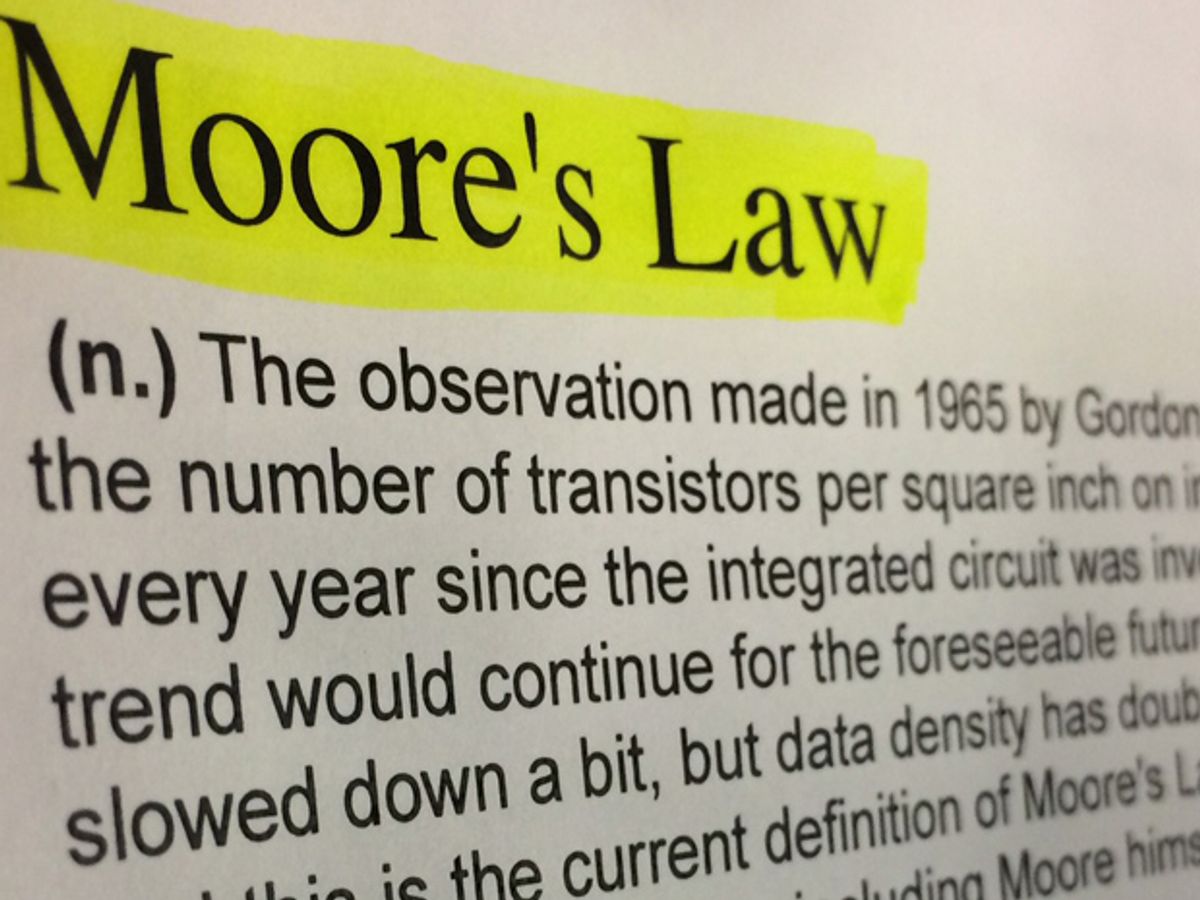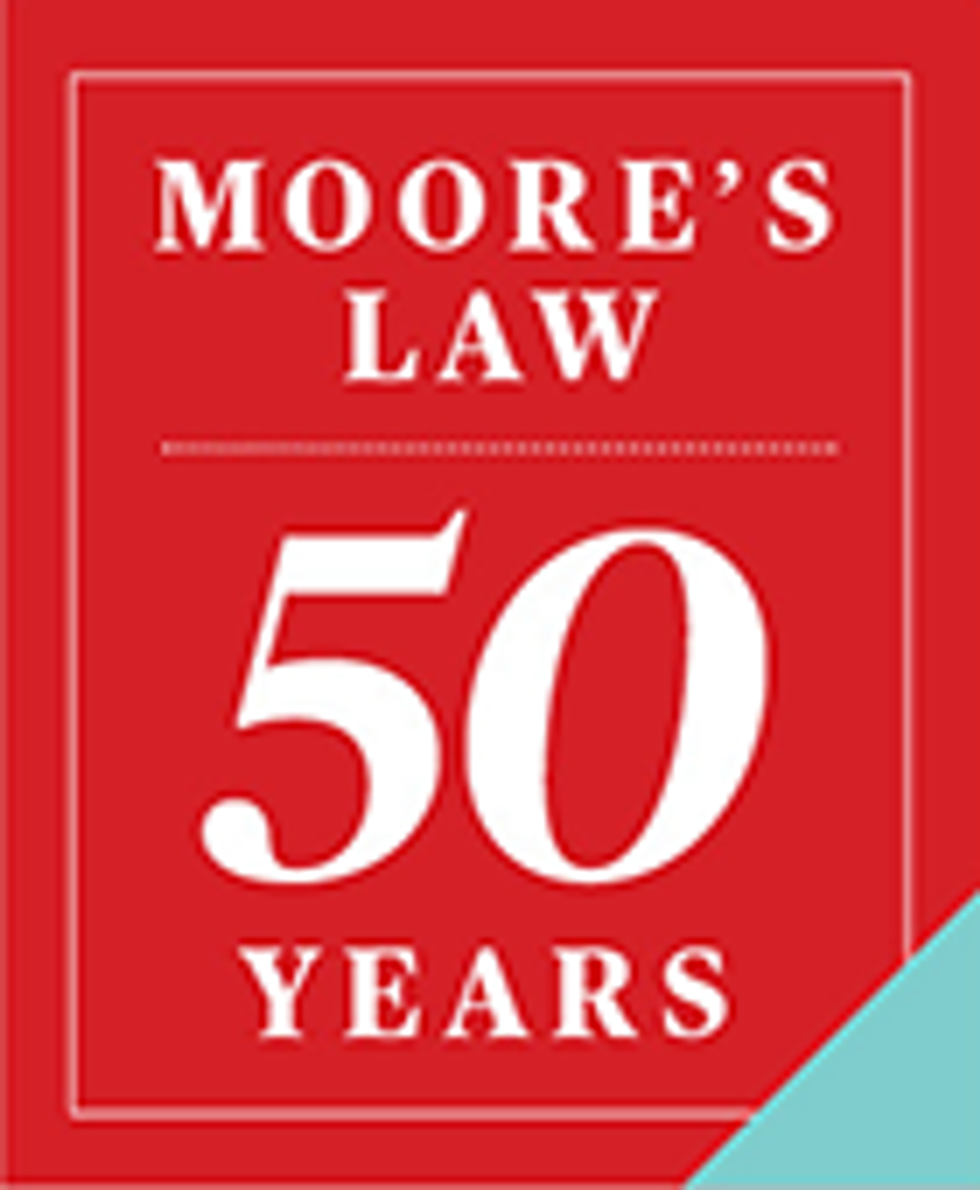When I called up Carver Mead in preparation for the 50th anniversary of Moore’s Law, I was eager to track down a particularly elusive detail: the very first time the term “Moore’s Law” was used.
The Caltech professor, now retired, is often credited with coining the term. This happened around 1970, it’s often said, but I couldn’t find evidence to back up that claim. I’m hardly the only one. I a chapter of an excellent book celebrating 40 years of Moore’s Law, historian David Brock has stated the origins of the phrase “remain murky.”
I thought I might as well ask the man himself while I had him on the phone. And I got very excited when Mead seemed to remember it like it was yesterday.
He told me the term first popped up during an interview he did in the late 60’s or early 70’s with Electronics writer Larry Waller, and that it appeared in an article in print very shortly after. Mead wasn’t sure whether it was he or Waller who coined the term. “It sort of bubbled up in the discussion,” Mead told me, “and then it came out in the article and it stuck.”
I later found that Mead tells a similar story in Ashlee Vance’s friendly guide to Silicon Valley. I thought I must be on to something. Somewhere, buried in an old issue of Electronics magazine, was the first mention of the term “Moore’s Law.” And it seemed it might be years earlier than the earliest citation given in the Oxford English Dictionary, which is to a 1977 article in Science.
I spent a long wintry Saturday afternoon at the New York Public Library zipping through back issues of Electronics on microfilm and came up completely dry.
So I tracked down Larry Waller to see if Carver Mead’s recollection aligned with his own. Waller said he didn’t start at Electronics until 1975, and that he had conversations with Mead around 1979 and 1980. At that time, Waller said, he was talking to Mead about Mead’s work in circuit design automation, and the term Moore’s Law was already kicking around. “It was just so pervasive I never knew who was credited with saying it first,” he told me. “I know Carver and I talked about it, but I just don’t remember the context.”
I went back to Mead to tell him what I’d found, and he said he really thought the interview happened much earlier, in the early 1970’s. “It must not have been Larry, and maybe not Electronics,” he wrote. “I am really sorry I don't have a copy of that interview.” A helpful engineering librarian at Caltech hunted through academic journals and popular magazines of the period to see if something might turn up, but she couldn’t find anything that seemed to fit the bill.
Somewhere floating out there, there could be such an article (and please tell me if you find it). But regardless of where the phrase “Moore’s Law” first turned up and who said it first, it seems fair to say that Mead was instrumental in putting the concept of Moore’s Law on the map, as he worked to convince people that gains in integrated circuit technology would continue for a long time to come.
“As Mead traveled throughout the silicon community in the early 1970s, he succeeded in building a belief in a long future for the technology, using Moore’s plots as convincing evidence. In doing so, Mead also played a key role in fusing Moore’s law with this belief in the future of electronics and building an expanding awareness of both,” Brock has written. “ While Mead may not have been the originator of the phrase Moore’s law (its precise origins remain murky), he undoubtedly acted as its charismatic Johnny Appleseed.”
As contributions go, that’s nothing to sniff at. And it was far from Mead’s only contribution to modern electronics.
Rachel Courtland, an unabashed astronomy aficionado, is a former senior associate editor at Spectrum. She now works in the editorial department at Nature. At Spectrum, she wrote about a variety of engineering efforts, including the quest for energy-producing fusion at the National Ignition Facility and the hunt for dark matter using an ultraquiet radio receiver. In 2014, she received a Neal Award for her feature on shrinking transistors and how the semiconductor industry talks about the challenge.




